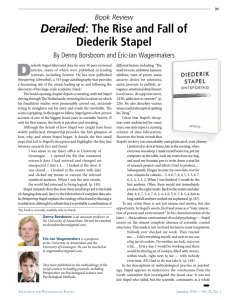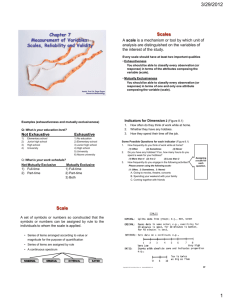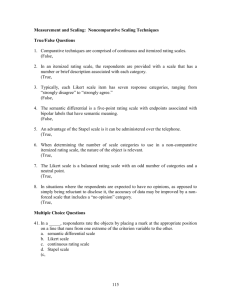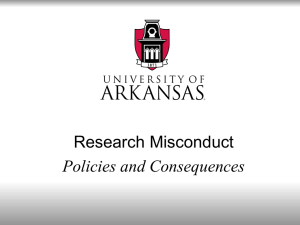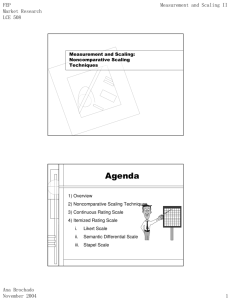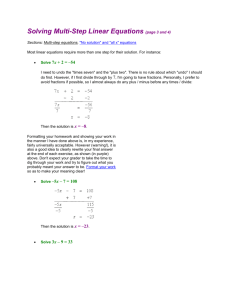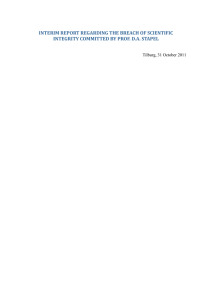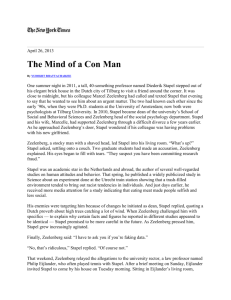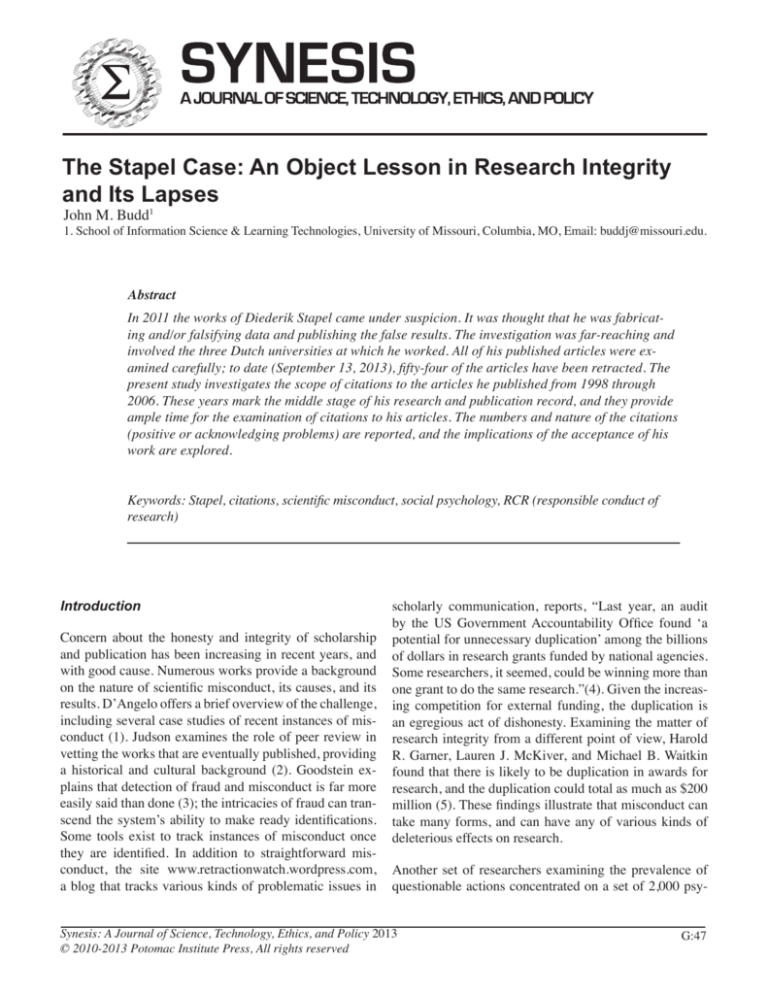
The Stapel Case: An Object Lesson in Research Integrity
and Its Lapses
John M. Budd1
1. School of Information Science & Learning Technologies, University of Missouri, Columbia, MO, Email: buddj@missouri.edu.
Abstract
In 2011 the works of Diederik Stapel came under suspicion. It was thought that he was fabricating and/or falsifying data and publishing the false results. The investigation was far-reaching and
involved the three Dutch universities at which he worked. All of his published articles were examined carefully; to date (September 13, 2013), fifty-four of the articles have been retracted. The
present study investigates the scope of citations to the articles he published from 1998 through
2006. These years mark the middle stage of his research and publication record, and they provide
ample time for the examination of citations to his articles. The numbers and nature of the citations
(positive or acknowledging problems) are reported, and the implications of the acceptance of his
work are explored.
Keywords: Stapel, citations, scientific misconduct, social psychology, RCR (responsible conduct of
research)
Introduction
Concern about the honesty and integrity of scholarship
and publication has been increasing in recent years, and
with good cause. Numerous works provide a background
on the nature of scientific misconduct, its causes, and its
results. D’Angelo offers a brief overview of the challenge,
including several case studies of recent instances of misconduct (1). Judson examines the role of peer review in
vetting the works that are eventually published, providing
a historical and cultural background (2). Goodstein explains that detection of fraud and misconduct is far more
easily said than done (3); the intricacies of fraud can transcend the system’s ability to make ready identifications.
Some tools exist to track instances of misconduct once
they are identified. In addition to straightforward misconduct, the site www.retractionwatch.wordpress.com,
a blog that tracks various kinds of problematic issues in
scholarly communication, reports, “Last year, an audit
by the US Government Accountability Office found ‘a
potential for unnecessary duplication’ among the billions
of dollars in research grants funded by national agencies.
Some researchers, it seemed, could be winning more than
one grant to do the same research.”(4). Given the increasing competition for external funding, the duplication is
an egregious act of dishonesty. Examining the matter of
research integrity from a different point of view, Harold
R. Garner, Lauren J. McKiver, and Michael B. Waitkin
found that there is likely to be duplication in awards for
research, and the duplication could total as much as $200
million (5). These findings illustrate that misconduct can
take many forms, and can have any of various kinds of
deleterious effects on research.
Another set of researchers examining the prevalence of
questionable actions concentrated on a set of 2,000 psy-
Synesis: A Journal of Science, Technology, Ethics, and Policy 2013
© 2010-2013 Potomac Institute Press, All rights reserved
G:47
Synesis: A Journal of Science, Technology, Ethics, and Policy 2013
chologists. John, Loewenstein, and Prelec assessed selfreporting of questionable behavior. A lengthy quotation
of their findings illustrates the magnitude of the problem
of questionable behavior:
We explored the response-scale effect further by comparing the distribution of responses between the two
response-scale conditions across all 25 items and collapsing across the wording manipulation. Among the
affirmative responses in the frequency-response-scale
condition (i.e., responses of once or twice, occasionally, or frequently), 64% (i.e., .153/ (.151 + .062 + .023))
of the affirmative responses fell into the once or twice
category, a nontrivial percentage fell into occasionally
(26%), and 10% fell into frequently. This result suggests that the prevalence estimates from the BTS study
represent a combination of single-instance and habitual
engagement in the behaviors [emphasis in original] (6).
There are other difficulties noted by psychologists, and
these challenges also make the identification of legitimate
work a daunting task. Wicherts and colleagues attempted
to obtain the data used in 141 published papers, but met
with limited success (7). They contacted the corresponding authors of papers published in four major psychological journals. Their results were disheartening:
As the 141 articles included a total of 249 studies, we
considered acquiring 90 to 100 data sets a realistic aim.
We reasoned that adding a follow-up request after the
original e-mail would take us a long way in that direction. Unfortunately, 6 months later, after writing more
than 400 e-mails—and sending some corresponding authors detailed descriptions of our study aims, approvals
of our ethical committee, signed assurances not to share
data with others, and even our full resumes—we ended
up with a meager 38 positive reactions and the actual
data sets from 64 studies (25.7% of the total number of
249 data sets). This means that 73% of the authors did
not share their data (7).
Among the implications of the study’s results is the lack
of replicability of published works. If studies cannot be
repeated, or if data cannot be examined by others, the
community has only the word of the researchers that
protocols were followed, that appropriate methodologies
were applied, and that findings can be found to be valid
and reliable.
G:48
Concerns over publications that are eventually retracted
are particularly troubling to the scholarly and research
communities. The problem may be especially pronounced
in biomedical research, as Budd, Coble, and Anderson
observe (8). They point out that the numbers of retractions have been rising in recent years, and many of those
retractions are due to scientific misconduct. Editors of
eighteen journals which published articles by Joachim
Boldt determined that eighty-eight of his papers should
be retracted (9). Biomedicine is not the only field where
retractions occur, though. Retraction Watch reports that
Ulrich Lichtenthaler, of the University of Mannheim,
has recently had a dozen papers retracted in management
journals (10). Social psychologist Dirk Smeesters has also
received publicity for problematic publications, some of
which have been retracted (11). The case of Diederik Stapel is not unique, but the investigations into his publications by three universities offer a unique opportunity for
investigation.
The beginnings of concern regarding Stapel’s
work
Beginning in approximately 1994 Diederik Stapel began
a career that would propel him into stardom among social
psychologists. His publication record was enviable, as
was the total of citations to his work. By the end of 2011
he had published more than 100 articles. However, by late
2011, Stapel’s world began to come falling down around
him. Some of his publications were questioned for their
validity. The initial questions led to a much more detailed
scrutiny. The institutions at which he worked began to
conduct a detailed examination of the entirety of his record. A trio of reports—the Levelt Committee, the Noort
Committee, and the Drenth Committee—issued their
lengthy final report (12). The report listed some of the
specific problems that investigators mention, including:
•
Generalizability of the findings from local to national
and international culture,
•
Verification bias and missing replications,
•
Incomplete or incorrect information about the research procedures used,
•
Statistical flaws,
•
Failure of scientific criticism (12).
Synesis: A Journal of Science, Technology, Ethics, and Policy 2013
The report’s conclusion does not limit itself to the actions
of Stapel; it includes severe criticism of the entire process
of peer review, which did not pay sufficient attention to
the above shortcomings. In particular, the authors of the
report make mention of the prevalent pressure to publish
and the role of editors and manuscript referees in fostering the problem of expansion of the literature. Also, since
Stapel worked with a number of collaborators, the authors
of the report urge journals to require all authors to state
explicitly what their role was in the creation of the work.
A model for such a requirement exists and could be
replicated widely. The Journal of American Medical
Association (JAMA) insists that each author listed on a
manuscript submit a detailed form stating precisely what
the individual’s contribution was and that each author
approves of the content (see, JAMA Sample Authorship
Form (13)) The form requires each co-author to state
explicitly that approval is given to the manuscript, that
data will be provided upon request, and each listed author
must indicate individual responsibilities (design, data
gathering, drafting the manuscript, statistical analysis,
etc.). Responsibility is thus explicitly shared.
In Stapel’s case, Wicherts has been quoted as stating that
“Dr. Stapel was able to operate for so long. . . Because
he was ‘lord of the data,’ the only person who saw the
experimental evidence that had been gathered (or fabricated)” (see Carey, 2011 (14)). Benedict Carey points
out that “In a prolific career, Dr. Stapel published papers
on the effect of power on hypocrisy, on racial stereotyping and on how advertisements affect how people view
themselves. Many of his findings appeared in newspapers
around the world, including The New York Times, which
reported in December on his study about advertising and
identity” (14). In support of these conclusions, Jennifer
Crocker and M. Lynne Cooper state, “APA began using
an electronic manuscript management system in 2003.
Between then and 2011 Stapel submitted 40 manuscripts;
24 were accepted and 16 were rejected. Given the number of editors and reviewers handling the manuscripts, it
would be almost impossible to detect a pattern of data
fabrication.” (15). Of interest is that the report found no
culpability on the parts of co-authors, but the dissertation
work by several students supervised by Stapel was called
into question (15). To date, the doctoral degrees of twelve
individuals are in jeopardy – on the other hand, several
students’ dissertations were examined because they used
Stapel’s data instead of gathering their own (15).
Stapel’s record
Data related to Stapel’s activities illustrate some of the
concerns the scholarly community has with his work. A
Scopus database search of Stapel by name yielded all
publications, co-authors, and citations presented in Tables
1-3, below. The total record of Stapel’s publication and
other activities (as of 24 February 2103) is reflected in
Table 1:
Table 1. Selected Data On Stapel’s Publications
Publication History:
No. of Articles (Scopus):
No. of Citations (Scopus):
No. of Retracted Articles:
1994-present
124
1,756
54
Table 2 demonstrates that Stapel’s publications received
numerous citations, most of them tacitly or substantively
positive.
Table 2. Citations to Stapel’s Publications
Total Citations to Stapel’s Articles (1998- 873
2006, n=39)
Substantive Citations
320
(Substantive self-citations: 106)
Tacit Citations
402
(Tacit self-citations: 71)
Not available for analysis:
151
Table 3 shows the journals in which Stapel published
most frequently:
Table 3. Most Frequent Journals Stapel Published in
J. of Personality and Social Psychology
European J. of Social Psychology
Personality and Social Psychology
J. of Experimental Social Psychology
Social Cognition
23
22
15
14
9
The present analysis covered the years 1998 through
2006. These years mark the middle stage of his research
and publication record, and they provide ample time for
the examination of citations to his articles.
G:49
Synesis: A Journal of Science, Technology, Ethics, and Policy 2013
Table 2 makes mention of tacit citations; tacit citations to
Stapel’s publications are quite easy to identify. The following excerpt from is a common example, from Johnson
and Stapel (so many of his citations are to his own work),
Harnessing social comparisons: When and how upward
comparisons influence goal pursuit. Basic and Applied
Social Psychology, 31, 334-42.
Sample: Repeatedly, upward comparisons that threaten positive self-views have been shown to lead to performance improvements, especially when that threat
arises because of extreme performance by the target
(Johnson, Norton, Nelson, Stapel, & Chartrand, 2008;
Johnson & Stapel, 2007a, 2007b), (p. 334).
Identifying the substantive positive citations require
closer readings of the citing papers and also require some
judgments. For example, the following quotation was
deemed to be a substantive citation (Weber and Hertel.
2007. Motivation gains of inferior group members: A
meta-analytical review. Journal of Personality and Social
Psychology, 93, 973-93).
Sample: However, such partner information should
not imply that the superior persons’ performance is out
of reach so that IGMs do not perceive impossibility in
keeping up (Johnson & Stapel, 2007; Seta, 1982) (p.
988).
Another example of the substantive use of Stapel’s work
is as follows (Gibson and Poposki. 2010. How the adoption of impression management goals alters impression
formation. Personality and Social Psychology Bulletin,
36, 1543-54):
Sample: Past research has demonstrated that activation
of the self prompts social comparison processes (Stapel
& Tesser, 2001), which can lead to contrast effects in
judgments of the self (Stapel & Koomen, 2001a) (p.
1544).
One more example illustrates the extent to which social
psychologists use Stapel’s work as legitimate research
(Hoffmann, Pennings, and Wies, S. 2011. Relationship
marketing’s role in managing the firm-investor dyad.
Journal of Business Research, 64, 898):
Sample: A cooperative orientation activates an integration mindset that leads to assimilation in points without
G:50
congruence yet established (Stapel and Koomen, 2005),
which reduces the likelihood of conflicts (p. 898).
As Table 3 indicates, numerous citing papers have accepted Stapel’s work as scientifically valid and, at time,
have even built their own research on Stapel’s methods or
findings. Few social psychologists can match the impact,
as defined by citations received, that Stapel’s work has
garnered. The numbers, and the numbers of substantive
citations point to a status as someone to whom others
turned as they conducted their own work. This is not to
say that citations represent a causal relationship between
a scholar and her/his influence, but it is an undeniable
indicator of such influence.
Additional implications
In addition to the difficulties Stapel has created for himself
(as was mentioned above), ten dissertations by students
Stapel supervised were found to contain fraudulent data,
although those students were cleared of any wrongdoing
in the inquiry. The report found that Stapel’s colleagues
and administrators seemed to accept his results at face
value. Meanwhile, his high profile at Tilburg insulated
him against initial rumblings about problems with his
data. This phenomenon raises a question that probably
cannot be answered through direct empirical investigation
in many instances – do institutions deliberately ignore or
cover up possibilities of problematic activities by faculty?
If the answer is yes, there needs to be safety for those who
would alert academic administrators to the presence of
misconduct. Sovacool says,
institutional reforms need to be established to encourage the neutrality, anonymity, and protection of whistleblowers. Similarly, better auditing mechanisms need
to be implemented to help motivate those researchers
working in hostile research environments to come forward (16).
If there is to be a reduction in scientific misconduct there
must be sufficient openness that whistleblowers can report
what they witness with impunity. Any obstacles put in
their way threaten the entirety of the scientific enterprise.
As the Dutch newspaper NRC Handelsblad reported:
More important than the fraud of Stapel is that in the
scientific world, no one has pulled the alarm about
strange things in Stapel’s publications,” says Pim Lev-
Synesis: A Journal of Science, Technology, Ethics, and Policy 2013
elt today in NRC Handelsblad. Levelt is chairman of
the committee that the work of Stapel in Tilburg investigated, such as commissions Noort and Drenth did
in Groningen and Amsterdam respectively. “The whole
system, from low to high, has failed. That is our shocking conclusion” (17).
Or, as another piece in the source suggests: Science has
failed (12). The exercise of criticism, something that science par excellence preaches, is totally neglected. That
said the chairman of the committee-Levelt afternoon during the presentation of the final report on the investigation
of fraud dismissed professor Diederik Stapel (12).
The Stapel report could have farther-reaching implications relating to scientific misconduct. NRC Handelsblad
has reported that the president of the Dutch Royal Academy of Sciences has demanded an expanded investigation
into the case of Don Poldermans, a prominent cardiologist
who lost his position at Erasmus University in the wake
of misconduct probe (18). Poldermans has reportedly acknowledged misconduct but not fraud. Meanwhile, Erasmus Magazine has reported that Levelt has criticized
Erasmus University’s handling of its own wayward social
psychologist, Dirk Smeesters, who resigned in June amid
concerns about the veracity of his data (19).
This marks the fall from grace of three of The Netherlands’ top scientists in barely a year. As this headline from
NRC declares:
[The report is a] wake-up call. We don’t think that
needs any translating. Updated 4:00 p.m. Eastern 11/29:
Turns out Stapel will be releasing a book tomorrow. It’s
called ‘Ontsporing,’ which means derailment, and, we
suppose, is supposed to evoke the sense that this onceupstanding and legit researcher somehow jumped — or
was knocked off? — the tracks of honesty and integrity
into his career of deceit. We’re also told that the Stapel
mess spawned a Dutch neologism: ‘slodderwetenschap,’ which means something like ‘sloppy science’ and
refers to ineffective peer review and a culture of science that allows fraud to go undetected for so long (18).
Following Stapel
The difficulty presented to psychology (and to the social
sciences in general) is well-stated by Leslie John and
colleagues (2012): “[T]he prevalence of [questionable re-
search practices] raises questions about the credibility of
research findings and threatens research integrity by producing unrealistically elegant results that may be difficult
to match without engaging in such practices oneself” (6).
As is mentioned above, their work examined responses by
approximately 2,000 psychologists regarding their own
activities. Many admitted to omitting confounding data,
smoothing data, and even outright misconduct. Since
the scientists themselves were responding the study has
exception credibility and deserves to be taken extremely
seriously (6).
Levelt adds a rather strident critique of scholarship in
general—one that should be heeded in all disciplines:
The implications go beyond Stapel, says psycholinguist
Willem Levelt, who chaired the Tilburg committee and
coordinated the entire investigation. “We’re not saying
all of social psychology is sloppy science,” he says.
“But the fact that this could happen shows that the review process has failed from the bottom to the top.”
Levelt believes the field is taking the message to heart,
however. The report praises the “reproducibility project,” a large collaborative effort to replicate psychology studies set up by Brian Nosek of the University
of Virginia in Charlottesville (Science, 30 March, p.
1558), as well as the November issue of Perspectives
on Psychological Science, which is devoted to analyses
of what ails the field and proposals to cure it (20).
In a turn of irony, Stapel, in one of the last papers he
published before the evaluative investigation began (21),
wrote that feedback from others is a major source of
self-knowledge and esteem. One can only speculate that
his own predicament influenced this paper. Battacharjee
reports on the penalties suffered by Stapel: “Diederik
Stapel, the former Tilburg University professor who
fabricated dozens of research studies, has been spared a
trial after reaching a settlement with Dutch prosecutors.
He will do 120 hours of community service and forgo
benefits from his former employer that would have been
equivalent to 1.5 years of salary.” (22) Even though the
final report on Stapel’s activities has been widely acknowledged as complete, detailed, and justified, not all
social psychologists praise it. In a brief article in Science,
the Executive Committee of the European Association of
Social Psychology (EASP) calls some of the report’s conclusions “defamatory, unfounded, and false.” And social
psychologist Wolfgang Stroebe of Utrecht University in
G:51
Synesis: A Journal of Science, Technology, Ethics, and Policy 2013
the Netherlands demanded an apology from the three investigation panels in a piece he wrote for his university’s
magazine (23).
It must be emphasized that this paper is in no way intended as an ad hominen attack on any individual, or to
be derogatory to the field of social psychology. The purpose is to illustrate how an individual’s position can be
misused to conduct egregious publishing activities. That
said, Stapel’s case is also an object lesson from which
social psychology and all disciplines can learn. JAMA’s
requirements for the reporting of responsibilities of all
named authors can be a first step to ensure some measure
of integrity in science. If any individual is going to sign
such a voucher, that person should take the responsibility
to review every component of the research. Another step
that could be taken is a similar assurance to be signed
by manuscript reviewers. The requirements could be, in
some respects, similar to those of the authors. Reviewers
must evaluate research questions thoroughly; must take a
serious look at the literature review for obvious omissions
that could have an effect on the paper as a whole; examine the proposed methodology very closely; pay special
attention to data collection (means and outcomes); and
ensure that conclusions are supported by all of the foregoing items. Many journals already have such requirements
of reviewers, but the examinations of the reviews submitted must be carefully assessed so that the most informed
publication decision can be made. Will these two recommendations solve all issues related to integrity? Probably
not. If they reduce the instances substantially, they will
have fulfilled a necessary goal.
Stapel self-published a book in Dutch entitled Ontsporing
(or “derailment” in English translation), but this has done
little to reclaim his reputation. As Battacharjee writes,
“When Stapel’s book came out, it got a mixed reception
from critics, and it angered many in the Netherlands who
thought it dishonorable of him to try to profit from his
misdeeds. Within days of its release, the book appeared
online in the form of PDFs, posted by those who wanted
to damage his chances of making money.” Battarcharjee
continues,
The unspooling of Stapel’s career has given him what he
managed to avoid for much of his life: the experience of
failure. On our visit to Stapel’s parents, I watched his discomfort as Rob and Dirkje tried to defend him. “I blame
the system,” his father said, steadfast. His argument was
that Stapel’s university managers and journal editors
should have been watching him more closely (24).
G:52
Clearly, one of Stapel’s problems was that he did not
monitor his own actions very closely.
Competing interests
The author declares no competing interests.
References
1. D’Angelo J. 2012. Ethics in science: Ethical misconduct in scientific research. Boca Raton: CRC Press.
2. Judson HF. 2004. The great betrayal: Fraud in science. Boston: Houghton Mifflin Harcourt.
3. Goodstein D. 2010. On fact and fraud: Cautionary
tales from the front lines of science. Princeton: Princeton University Press.
4. Retractionwatch. [Internet] [cited 2013 Nov 12].
Available from: http://retractionwatch.wordpress.
com/2013/01/30/has-double-dipping-cost-u-s-science-funding-agencies-tens-of-millions-of-dollars/.
5. Garner HR, McKiver LJ, Waitkin MB. Research
funding: Same work, twice the money? Nature. 2013;
493(7434): 599–601.
6. John LK, Loewenstein G, Prelec D. Measuring the
prevalence of questionable research practices with
incentives for truth telling. Psychological Science.
2012; 23(5): 524-532.
7. Wicherts JM, Borsboom D, Kats J, Molenaar D. The
poor availability of psychological research data for
reanalysis. American Psychologist. 2006; Oct;61(7):
726-728.
8. Budd JM, Coble ZC, Anderson KM. Retracted publications in biomedicine: Cause for concern. ACRL
Conference, Philadelphia, PA: 2011. Available from:
http://www.ala.org/acrl/sites/ala.org.acrl/files/content/conferences/confsandpreconfs/national/2011/
papers/retracted_publicatio.pdf.
9. Editors-in-Chief Statement Regarding Published
Clinical Trials Conducted without IRB Approval by
Joachim Boldt. Anesthesia & Analgesia. [Internet]
2011 March 12 [cited 2013 Nov 12]. http://www.
aaeditor.org/EIC.Joint.Statement.on.Retractions.pdf.
10. Retractionwatch. What’s new is not new again: Ulrich
Lichtenthaler retracts eighth paper. [Internet] [cited
2013 Nov 12]. Available from: http://retractionwatch.
wordpress.com/2012/11/21/whats-new-is-not-newagain-ulrich-lichtenthaler-retracts-eighth-paper/.
11. Retractionwatch. Retraction three for Dirk Smeesters.
[Internet] [cited 2013 Nov 12]. Available from: http://
retractionwatch.wordpress.com/2012/12/01/retraction-three-for-dirk-smeesters/.
Synesis: A Journal of Science, Technology, Ethics, and Policy 2013
12. The Levelt Committee, The Drenth Committee & The
Noort Committee. Flawed science: The fraudulent
research practices of social psychologist Diederik
Stapel. [Internet] 2012 Nov 28. [cited 2013 Oct. 28]
Available from: https://www.commissielevelt.nl/.
13. Journal of the American Medical Association. Sample
Authorship Form. [Internet] 2013 Oct 10 [cited 2013
Oct. 28]. Available from: http://jama.jamanetwork.
com/data/ifora-forms/jama/auinst_crit.pdf).
14. Carey B. Fraud case seen as a red flag for psychology research. New York Times [Internet] 2011; 2
Nov. Available from: http://www.sakkyndig.com/
psykologi/artvit/nytimes2011.pdf.
15.Crocker J, Cooper ML. Addressing scientific
fraud. Science Dec. 2011; 334(6060): 1182.
Available from: http://www.sciencemag.org/content/334/6060/1182.short.
16. Sovacool BK. Using criminalization and due process
to reduce scientific misconduct. Am J Bioethics.
2005; 5(5): W1-W7.
17. Berkhout K. Fraudecomissies Stapel: De sociale
psychologie faalde. (Trans: The Fraud Commission
on Stapel: Social psychology failed.) NRC Handelsblad. [Internet] 2012. [cited 2013 Sept. 16]. Available
from: http://www.nrc.nl/nieuws/2012/11/28/fraudecommissies-stapel-de-sociale-psychologie-faalde/.
18. Berkhout K, Rosenberg E. Nieuw geval van wetenschapsfraude – hoogleraar Erasmus MC ontslgagen. (Trans: New case of scientific fraud: Professor
Fired.). NRC Handelsblad. [Internet] 2011 Nov 17.
[cited 2013 Sept. 16]. Available from: http://www.
nrc.nl/nieuws/2011/11/17/nieuw-geval-van-wetenschapsfraude-hoogleraar-erasmus-mc-ontslagen/.
19. Erasmus Magazine. Fraude van Stapel is verbijsterend. (Trans: Fraud by Stapel is baffling.) [Internet] 2012. [cited 2013 Sept 16]. Available from:
http://www.erasmusmagazine.nl/nieuws/detail/
article/4201-fraude-van-stapel-is-verbijsterend/.
20. Enserink M. Final report on Stapel blames field as a
whole. Science. 2012; 338(6112):1270-1271.
21. Noordewier MK, Stapel DA. When failure feels better than success: Self-salience, self-consistency, and
affect. Br J Soc Psychol 2011; June; 51(2):321-30.
22. Battacharjee Y. The mind of a con man. New York
Times. [Internet] 2013 April 26. [cited 2013 Sept 16].
Available from: http://www.nytimes.com/2013/04/28/
magazine/diederik-stapels-audacious-academicfraud.html?pagewanted=all&_r=0.
23. Social psychologists protest Stapel report “attack”.
Science 2012; Dec.; 338(6113): 1401.
24. Battacharjee Y. Stapel gets community service for
fabricating studies. ScienceInsider. [Internet] 2013
June 28. [cited 2013 Sept. 16]. Available from: http://
news.sciencemag.org/europe/2013/06/stapel-getscommunity-service-fabricating-studies.
G:53

